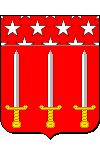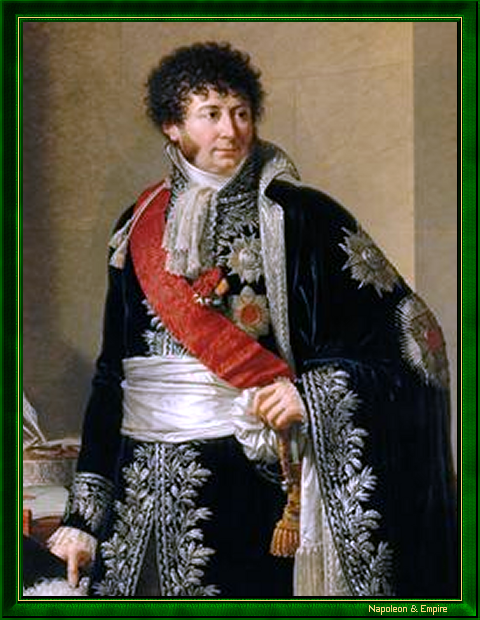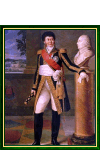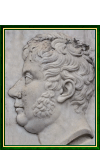Henri-Jacques-Guillaume Clarke
First Count of Hunebourg, Duke of Feltre
Pronunciation:

Of Irish descent, Henri Jacques Guillaume Clarke was born on October 17, 1765 in Landrecies, in the Avesnois region (future department of Nord).
He entered the Paris military academy as a cadet in 1781, becoming a hussar officer and secretary to the Duc d'Orléans.
In 1790, as a captain, he briefly served as attaché to the London embassy, before returning to the Army of the Rhine. Lieutenant-colonel in 1792, he distinguished himself at the capture of Speyer (September 30, 1792), at the defense of the Nahe crossing (March 17, 1793), during the retreat to Worms (March 29-30), and at the Hercheim affair on May 17, for which he was appointed brigadier-general on the battlefield by the representatives on mission.
Despite his brilliant record of service, however, he was suspended and imprisoned the following October, as a nobleman suspected of links with the Orléans family. Quickly released, he was initially left without a job until Lazare Carnot, after the 9th of Thermidor, called him to head the war's topographical office as a division general.
In 1796, he was sent to Italy with a dual mission: to secretly negotiate with Austria for the release of Gilbert du Motier de La Fayette, and to keep an eye on Napoleon Bonaparte. The way he performed the latter task (he was captivated by the young general, and the two men became close friends) led to his recall by the Directoire and his dismissal from rank and functions.
Clarke was reduced to looking for a new job, and turned to the banker Jean-Frédéric Perregaux, future father-in-law of Auguste Viesse de Marmont,, with whom he demonstrated his knowledge of foreign languages: English and German, and his "slight idea of double-entry bookkeeping".
The 18th of Brumaire put him back in the saddle. Napoleon Bonaparte made him one of his closest collaborators: he was appointed director of the War Depository, then Minister Plenipotentiary to the King of Etruria in July 1801.
His rise continued under the Empire: Conseiller d'État in 1804, Secretary to the Emperor's Cabinet in 5801-1806. In this capacity, he followed Napoleon I into the army, becoming Governor of Upper and Lower Austria (November 15, 1805), Erfurt, Berlin and Prussia (October 1806).
On August 19, 1807, he was appointed Minister of War, a post he held until April 1, 1814, always showing himself to be the faithful executor of the Emperor's wishes.
His obedience was rewarded with the titles of Count of Hunebourg in 1808 and Duke of Feltre in 1809.
The disasters of 1812 and 1813 cooled his zeal sufficiently for him to welcome the return of the Bourbons. Louis XVIII, who had made him Peer de France, appointed him Minister of War on March 11, 1815, to oppose the triumphant return of Napoleon 1st. In vain.
He followed the king into exile during the Hundred Days, returned with him, and returned to his ministry on September 24, 1815, where he proved implacable to his former brothers-in-arms. On July 3, 1816, he became Marshal of France.
He died on October 28, 1818 in Neuwiller-la-Roche (now Neuwiller-les-Saverne), Alsace.
"Henri-Jacques-Guillaume Clarke, Duke of Feltre", by François-Xavier Fabre (Montpellier 1766 - Montpellier 1837).

It has been claimed that Clarke made early contact with an emissary of Louis XVIII - the Marquis de Chabannes - and left Paris undefended in 1814. There is no formal proof of this, and Napoleon I himself, if the memorial is to be believed, never doubted his probity and honesty.
Clarke's name is inscribed on the 11th column (east pillar) of the Arc de Triomphe de l'Étoile .
Henri-Jacques-Guillaume Clarke is buried in Neuwiller-les-Saverne cemetery , while his three sons and his wife are buried in Paris, in Père Lachaise cemetery, division 37 .
Other portraits

"Henri-Jacques-Guillaume Clarke, Count of Hunebourg, Duke of Feltre", painted after the Restoration by Guillaume Descamps (Lille 1779 - Paris 1858).
